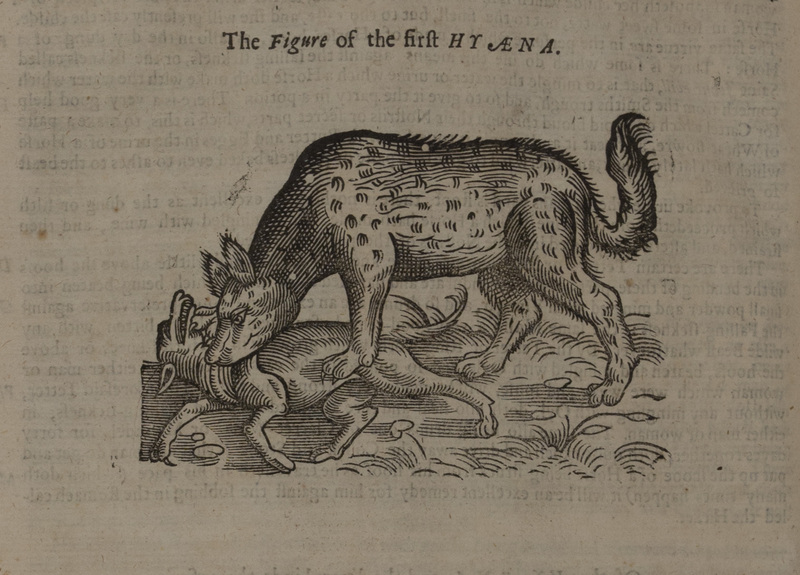Hyena
Another dramatic, urgent moment is capture in this illustration of a hyena. Putting a hyena along with its fellow animal, Gesner shows hyanea's power over smaller animals and presented more animated, and dramatic representation of its relationship with other animals in the order of nature.Athe the same time, the hyena, visually complement very well with the textual description of the appearance of a hyena. Text describes that a hyena has a speckled body that makes it look even worse.
Vast amount of the text about this animal talks about the innate characteristic of the animal. Its dangerousness, and its ability to change sex was included. As Pliny the Edler and as medieval bestiaries would mention, the foremost distinctive characteristic of the animal is its ability to change its sex. Even though it is not clearly represented in the illustration, but possibly, Gesner might have intentionally missed out to illustrate genital structure to make sure that the sexual orientation is undertermined.
Also, a hyena is, from the past, thought to be the only animal that eats dead animals. (note 1) It is hard to tell whether the defeated animal in the illustration is still alive or already dead, but it still gives a glimpse of this specific animal's its distinctive characteristic.
Even though this illustration does not offer scientific and anatomical information about hyenas, it still fits the purpose of Geser that is to place animals in the system of nature, instead of isolating it into a framed space of science and observation.
The illustration itself is very delicate so that it gives a sense of its hair and its texture as well as the distinguishing pattern of this specific type of animal. Although it is not enought for being an observational image that is to be studied either scientifically or anatomically, it still suggests both physical appearance and its place in the order of the larger nature as a whole.
